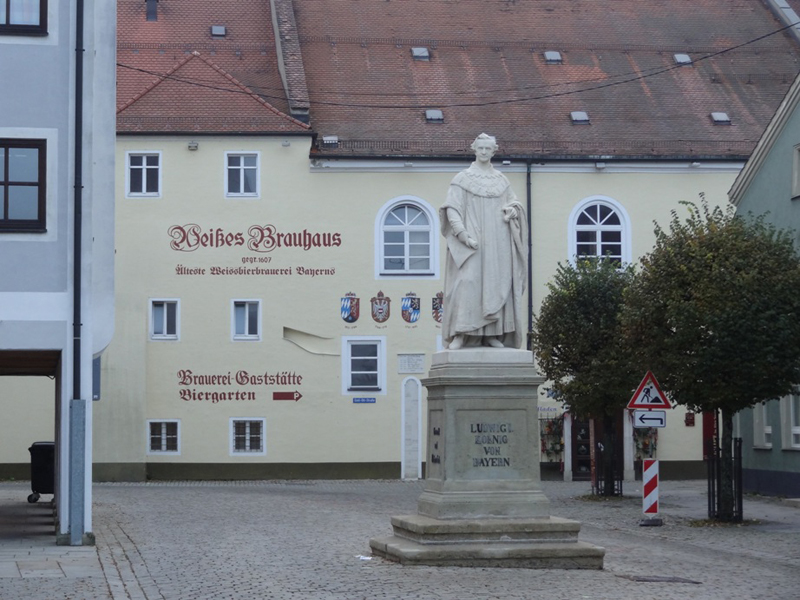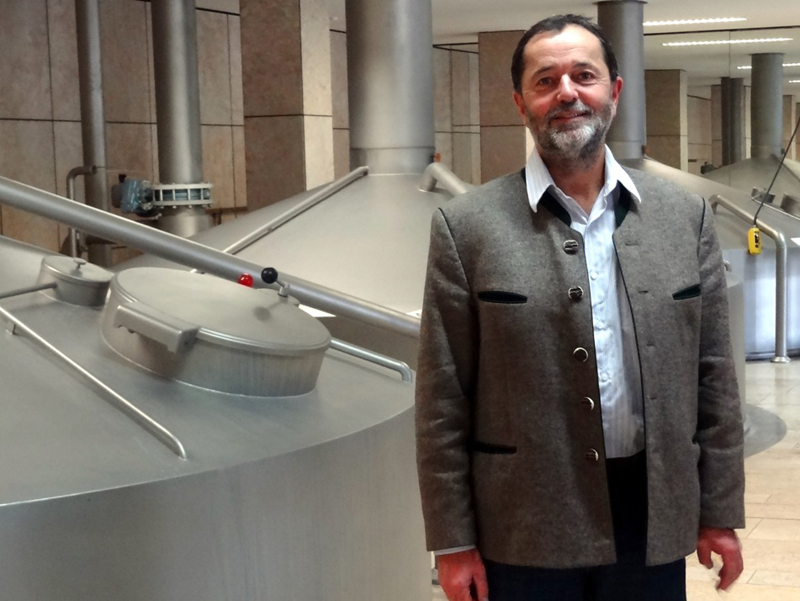Quirks of Brewing: Ferulic Acid Rest
A tall, seductively curvy vase of weissbier, preferably served in the dappled light of a Bavarian biergarten on a summer day, is such a fixture of German beer culture that we sometimes overlook how weird it is. The standard German beer—enforced by national decree—is a lager of precise description, with no funny business allowed. Weizens, though, are all funny business. They’re made with wheat to begin with—a dubious grain in the eyes of the state—and that wheat does not sparkle brightly like the famous lagers, but instead billows and turns things a hazy golden. Even more strange, weissbiers are yeast forward, with assertive flavors of banana and clove, and evoke the beers of Brussels a whole lot more than those of Berlin. Familiarity make them seem normal enough, but by the standards of most German beers, they’re serious oddballs.
Weissbiers are a kind of heirloom beer. Historians believe their provenance is Bohemian, or anyway that’s where we find the earliest records. Sometime in the 1400s, the local aristocracy started eschewing the rough brown beer of the peasantry to sip on this refined, new-fangled beer. They first appeared in Bavaria around 1500, but just barely. A duke set up a weissbier brewery in Bavaria around 1500 and—thanks to Reinheitsgebot—preserved their monopoly for a century. (Reinheitsgebot is cast as a “purity” law, but it came into being in part to protect wheat for bakers and restrict the number of breweries making weizen.) The popularity of wheat beers waxed for centuries before waning—almost completely dying out in the mid-19th century. They were too old-fashioned, and lagers were putting them out of business. Even then, 160 years ago, they were already starting to seem strange.
Let’s travel through time and space and land in the beautiful Bavarian hamlet of Kelheim, which got its first weissbier brewery in 1607. If there’s an ancestral home to the style, that’s where you’ll find it. It’s also where you’ll find G. Schneider & Sohn, one of the only weissbier breweries in the world: every beer they make is a wheat beer. It’s not just a marketing gimmick, either—the brewery was made differently and, until an upgrade in 2004 made it possible to make alcoholfrei (nonalcoholic beer) and kristalweizen, it didn’t have a filtration system nor conditioning tanks. The weissbier goes straight from the fermenters to the bottle, picking up a bit of “food” (speise in German) along the way for carbonation. When we were standing in the fermentation room watching giant vats bubble like the mudpots in Yellowstone, Master Brewer Hans-Peter Drexler said, “It’s the same system as a hundred years before—the only difference is 100 years ago they had wooden vessels and we have stainless steel.”
But of all the strange features of the Bavarian weissbier, one of the most interesting is how it gets its characteristic spice. (In other styles, it’s a fault.) Some breweries tone down the spice so the banana ester (isoamyl acetate) is highlighted, making it appeal to those who like sweeter tastes. Schneider is known for its phenols, though, which Drexler describes as “spicy-tasting, like clove and nutmeg.”
That flavor doesn’t come accidentally—or easily. There are two steps, and the most important is what’s known as a “ferulic acid rest.” Both barley and wheat contain a ferulic acid—which is technically a “phenolic phytochemical.” But in order to act as a precursor to that spicy flavor, it must be released from the malt first. Ferulic acid is freed during mashing, but only within a band of temperature between 104-122˚ F. Drexler says that a stop at 113˚ F will produce “a distinct phenolic note.”
Once the ferulic acid is in the wort, it can be converted by yeast into a tasty-sounding compound known as 4-vinyl guaiacol, the actual source of the flavor. The yeast must be a special variety known was POF+, meaning “phenolic off-flavor.” It was originally a slur, issued from the perspective of lager breweries who didn’t want any 4-vinyl guaiacol in their beer. From the weissbier brewer’s perspective, it’s critical—and the phenolic result hardly an “off flavor.”
Drexler orients his brewery, from sourcing the materials to mashing to the fermentation, on cultivating this flavor. “We are very interested to have the raw materials that bring a lot of the ferulic acid to the wort to get a lot of vinyl guaiacol in the beer. It comes from the barley and the wheat—most of it comes from the barley. The wheat malt brings other characteristic aromas, but the clove aroma—most comes from the barley malt. So we try to get a lot of this vinyl guiacol to get a typical aroma in the beer.”
This is an example of one of beer’s central truths: one brewer’s “off-flavor” is the main attraction in another brewer’s beer. As Bavarians got more and more adept at fermenting their lagers in the cool of underground caves, they moved away from exotic flavors of wheat ales. Fortunately, not all of them. Some kept alive the older tradition, and all the weird practices needed to preserve the old flavors—like ferulic acid rests.
Read more posts from The Beer Bible Blog.
Jeff Alworth is the author of the forthcoming book, The Beer Bible (Workman, 2015). Follow him on Twitter or find him at his blog, Beervana.




One man’s mead is another man’s Kreusen, I guess.